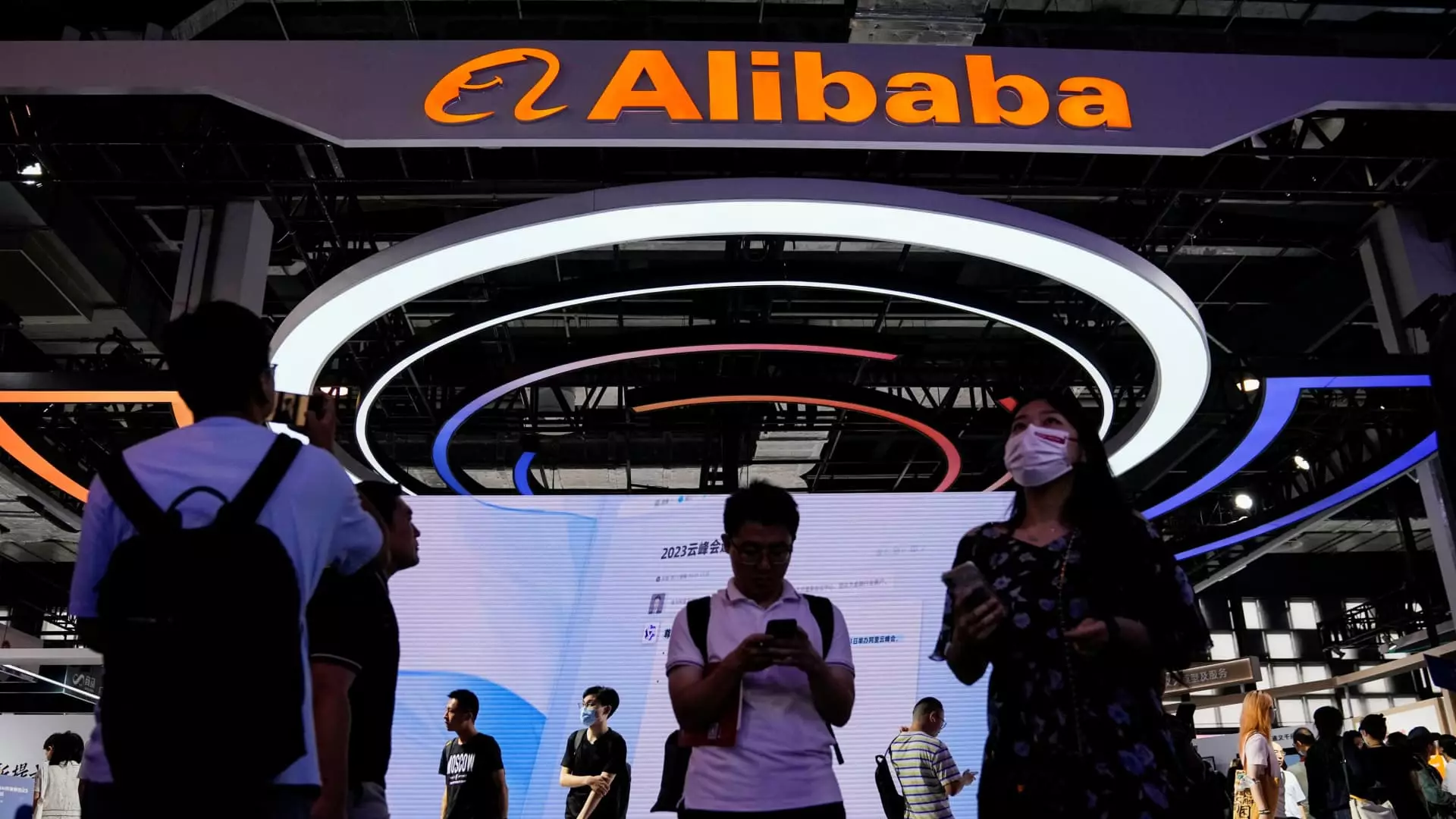In the ever-evolving world of finance, the widening rift between Chinese and U.S. stocks is unmistakable and serves as a striking reminder of global economic shifts. The S & P 500 recently slipped into correction territory, marking a concerning milestone for American investors amidst a landscape riddled with uncertainty. Conversely, the MSCI China index is experiencing an unprecedented surge, showcasing its most promising start to the year. Goldman Sachs attributes this boom largely to developments in artificial intelligence, which have ignited investor enthusiasm and significantly influenced market trends.
The situation highlights an increasingly polarized market atmosphere where perceptions, sentiment, and investor confidence are at odds. U.S. stocks, particularly those within the technology sector, are struggling against a backdrop of economic headwinds, while their Chinese counterparts harness momentum from AI innovations. Such contrasting trajectories raise questions about the long-term viability of investments in these two distinct markets.
The Phenomenon of the “Fab Four”
One key driver behind the impressive performance of Chinese stocks is the emergence of what has been dubbed the “Fab Four”: Baidu, Alibaba, Tencent, and Xiaomi. These tech giants represent an impressive coalition of growth and innovation that has captivated both domestic and international investors. Their stocks, traded predominantly in Hong Kong and bolstered by U.S.-listed shares, reflect the burgeoning dominance of Chinese technology firms on the world stage.
This newfound recognition mirrors the explosive rise of pop culture icons; the “Fab Four” are akin to The Beatles in their chart-topping ascent driven by the latest technology trends. Baidu and Alibaba have both unveiled ambitious AI developments, claiming their models rival those of established powerhouses like OpenAI. With massive user bases, their ability to capitalize on AI innovations in e-commerce and social media positions them favorably in an increasingly digital economy.
The Digression of the “Magnificent 7”
In stark contrast to the triumph of their Chinese brethren, the so-called “Magnificent 7” of U.S. tech — companies such as Alphabet, Amazon, and Apple — are facing significant challenges. Recent analyses reveal a troubling decline, with losses compounding even as AI hype generates lofty expectations. The Bloomberg Magnificent 7 Index is down approximately 12% year-to-date, signaling a potential reallocation of investor interest away from these once-revered stocks.
This shift comes at a critical juncture for the U.S. economy, with firms in the Magnificent 7 potentially grappling with diminishing market cap—a stark contrast to the doubling of the “Fab Four’s” total market cap to a staggering $1.6 trillion. The disparity feeds into a narrative that the U.S. is losing its edge in technology innovation as it faces economic stagnation, while China propels forward, deftly leveraging state support and strategic positioning in global supply chains.
The Resurgence of Investor Optimism
As investor sentiment shifts, the Chinese stock market has started to resemble the AI-driven rally that characterized the U.S. scene over the past couple of years. There is a palpable hunger for growth and profits, with analysts noting a significant valuation gap between Chinese AI enterprises and their American counterparts. This gap is not just a fleeting observation; it presents an opportunity for investors seeking to capitalize on newfound optimism in the Chinese market.
The recent record high of net purchases from mainland Chinese investors in Hong Kong stocks illustrates a burgeoning trust in the potential of homegrown tech giants. With institutions increasingly recognizing this shift, short-term hedge funds have stepped up their purchases, while long-term investors are beginning to show interest as well. The stage is being set for a renewed focus on Chinese stocks as U.S. market conditions exacerbate concerns over economic stability.
Future Implications and Economic Dynamics
Despite the excitement surrounding Chinese stocks, caution remains essential. Analysts warn that while immediate gains are enticing, the U.S. market continues to wield significant global influence. Consumer sentiment, particularly in America, will likely be shaped by stock performance; a sharp decline could have downstream effects that reverberate beyond borders. As such, investors should remain vigilant, acknowledging that the interplay between these two markets is more intricate than mere numbers on a stock ticker.
The divergence between Chinese and U.S. stocks may well define the next chapter in global finance, challenging conventional wisdom and reshaping how investors approach technology and innovation. In this brave new world, understanding the dynamics at play is paramount for making informed investment decisions. While it’s easy to be swept up in the euphoria of growth, a discerning perspective is essential to navigate the complexities ahead.



Leave a Reply